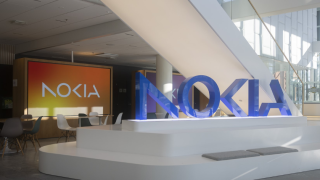Mat Preston of Virgin Media Business Wholesale talks about how today’s big tech innovations will impact on tomorrow’s networks.
‘Ready for Impact?’ That was the question posed in a recent report from Virgin Media Business Wholesale on what it sees as today’s five most disruptive tech innovations for networks – distributed ledger technology, the metaverse, quantum computing, extended reality and artificial intelligence. Mat Preston, head of technical and partner success in the company’s wholesale division, talked to Capacity about the transformative demands these technologies will place on tomorrow’s networks.
How well are telecoms networks currently set up to handle the capacity needs of new technologies like the five mentioned in the report?
The industry is in a great position to capitalise on the monumental influx in data creation and consumption brought about by these innovations. Most of the UK has access to robust business connectivity, though many of today’s networks don’t necessarily have the scalability and flexibility to adapt quickly.
A lot of start-ups and altnets have also entered the market in recent years. While they have the benefit of using wholly new technologies in their network that can afford them a lot of agility, many face the challenge of having more short-term financial priorities to demonstrate returns for investors.
Our report is about raising awareness on the impact of these new technologies and highlighting where C-level executives at networking companies need to be thinking about spending their budget.
What impact do you see these new technologies having on networks?
All five are set to create a shift in the characteristics of networks and a significant increase in capacity demand. Such applications are dependent on low latency, while real-time processing is becoming much closer to the end user and edge computing is proliferating as a result.
There’s a statistic in the report about the adoption of AI service ChatGPT, which took just two months from launch in November 2022 to gain 100 million active users. As much as growth inevitably tapers off with new technologies, this indicates the potential rapid step change in network demand.
There’s also a great summary chart in the report that plots each of the five technologies against business impact and ease of execution – and it’s no surprise that AI is in the top quadrant. AI’s now becoming part of our daily lives and I think it will therefore have the biggest, most imminent impact.
How can networks be prepared for the surge in capacity demand?
A number of things are happening across the industry to help that. For our part at Virgin Media Business Wholesale, we’re investing heavily in our upgrade from hybrid fibre coax to XGS-PON technology to enhance connectivity in the access layer. We’re enabling capacity of up to 10Gbps in the access network and are also investing in our core network capacity as we see a shift in network demand from 100G towards 400G channels.
Another element is expanding network reach to meet low-latency needs. When you look at distributed ledger technology, for example, that lends itself to the need for more decentralised regional and local data centres. I think core networks will therefore expand to provide more capacity at the edge.
Why should customers come to Virgin Media Business Wholesale to get what they need for the transition?
Apart from investing heavily in our network infrastructure, we’ve done a lot to improve our customer experience over the last 18 months or so. We’ve been making it easier for customers to do business with us through having the right product capabilities, an improved customer portal and APIs, and an improved experience supported by our partner-success and pre-sales functions.
Our smart planning tool allows our internal teams to visualise and efficiently plan routes across our network in the most cost-effective manner much more quickly than ever before. As a business, we also have the autonomy to work with customers to construct commercial models that best suit them.
How do you foresee the long-term future of the industry and the outlook for networks in dealing with all these data-hungry services?
We’re already seeing consolidation in the industry to try and achieve the scale needed for the future. I think that will continue at a rapid pace for the next few years. This will bring about the usual complexity of integrating systems and organisations, which will inevitably take time to resolve.
I think we’ll see more of a shift towards dark fibre in core networks to provide operators with the ability to scale, flex and manage networks themselves. Indeed, we’re seeing an increased demand for that from partners and with the largest available dark-fibre coverage in the UK, we’re well placed to meet this increasing demand head-on.
In addition, I think we’ll see an expansion of networks to a more regional footprint and the continued rollout of XGS-PON on the access side. There are some fundamental changes for the industry ahead and we’ll see more development in AI helping us to do that too.
Find the Virgin Media Business ‘Ready for Impact?’ report here.





